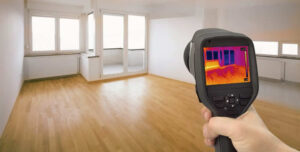6 Ways to Locate Hidden Water Leaks in Your Residence
6 Ways to Locate Hidden Water Leaks in Your Residence
Blog Article
The author is making several great points on Finding hidden leaks overall in this post followed below.

Early detection of dripping water lines can minimize a possible calamity. Aside from conserving you money, it will certainly reduce the irritation and also frustration. The moment you locate a leakage, calling your plumber for repair services is the most effective solution. Nevertheless, some little water leakages may not show up. Below are some hacks that assist if you can not discover it with your naked eyes.
1. Examine the Water Meter
Every house has a water meter. Checking it is a proven manner in which helps you discover leakages. For starters, turn off all the water sources. Guarantee no one will purge, utilize the tap, shower, run the cleaning maker or dish washer. From there, most likely to the meter and also watch if it will certainly alter. Given that no one is utilizing it, there should be no motions. That shows a fast-moving leakage if it relocates. If you find no changes, wait an hour or two and inspect back once more. This implies you might have a sluggish leak that could even be underground.
2. Examine Water Consumption
Examine your water costs and track your water intake. As the one paying it, you need to notice if there are any type of inconsistencies. If you spot sudden changes, in spite of your usage being the same, it indicates that you have leaks in your plumbing system. Keep in mind, your water costs must drop under the same array every month. An abrupt spike in your bill suggests a fast-moving leakage.
At the same time, a stable boost on a monthly basis, despite the exact same practices, shows you have a slow-moving leak that's also gradually escalating. Call a plumber to thoroughly inspect your property, particularly if you feel a warm location on your floor with piping below.
3. Do a Food Coloring Test
When it comes to water consumption, 30% comes from toilets. If the shade somehow infiltrates your dish throughout that time without flushing, there's a leak between the container and bowl.
4. Asses Outside Lines
Don't neglect to examine your outdoor water lines also. Examination faucets by attaching a yard tube. Ought to water leak out of the connection, you have a loosened rubber gasket. Replace this and also make certain all links are tight. If you've got an automatic sprinkler, it will certainly help get it skillfully checked out and maintained annually. One small leakage can lose lots of water and also spike your water bill.
5. Evaluate the situation and check
House owners need to make it a practice to inspect under the sink counters and also inside closets for any bad odor or mold growth. These 2 red flags suggest a leakage so punctual focus is needed. Doing regular inspections, also bi-annually, can conserve you from a significant issue.
Check for stainings as well as deteriorating as many pipelines as well as devices have a life expectancy. If you think dripping water lines in your plumbing system, don't wait for it to intensify.
Early discovery of dripping water lines can minimize a potential disaster. Some little water leaks may not be visible. Inspecting it is a proven means that helps you find leakages. One tiny leak can squander lots of water and increase your water expense.
If you suspect dripping water lines in your plumbing system, don't wait for it to rise.
WARNING SIGNS OF WATER LEAKAGE BEHIND THE WALL
PERSISTENT MUSTY ODORS
As water slowly drips from a leaky pipe inside the wall, flooring and sheetrock stay damp and develop an odor similar to wet cardboard. It generates a musty smell that can help you find hidden leaks.
MOLD IN UNUSUAL AREAS
Mold usually grows in wet areas like kitchens, baths and laundry rooms. If you spot the stuff on walls or baseboards in other rooms of the house, it’s a good indicator of undetected water leaks.
STAINS THAT GROW
When mold thrives around a leaky pipe, it sometimes takes hold on the inside surface of the affected wall. A growing stain on otherwise clean sheetrock is often your sign of a hidden plumbing problem.
PEELING OR BUBBLING WALLPAPER / PAINT
This clue is easy to miss in rooms that don’t get much use. When you see wallpaper separating along seams or paint bubbling or flaking off the wall, blame sheetrock that stays wet because of an undetected leak.
BUCKLED CEILINGS AND STAINED FLOORS
If ceilings or floors in bathrooms, kitchens or laundry areas develop structural problems, don’t rule out constant damp inside the walls. Wet sheetrock can affect adjacent framing, flooring and ceilings.
https://www.servicemasterbyzaba.com/blog/how-to-detect-water-leakage-in-walls/

I am just very excited about Detecting hidden plumbing leaks and I hope you enjoyed reading the blog entry. Do you know about anybody else who is inquisitive about the topic? Please feel free to share it. Thanks a lot for your time. Visit again soon.
Report this page